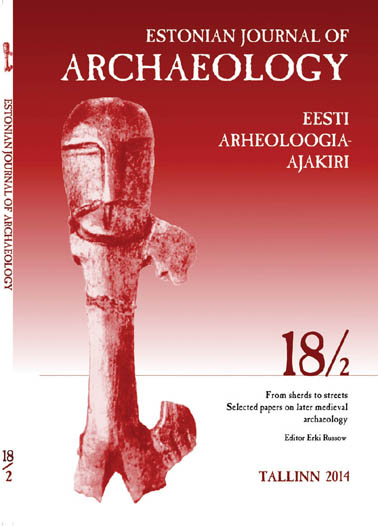POSSIBILITIES OF URBAN ARCHAEOLOGY IN INTERPRETING AN EARLY TOWN PLAN OF HAAPSALU
POSSIBILITIES OF URBAN ARCHAEOLOGY IN INTERPRETING AN EARLY TOWN PLAN OF HAAPSALU
Author(s): Anton PärnSubject(s): Archaeology
Published by: Teaduste Akadeemia Kirjastus
Keywords: POSSIBILITIES OF URBAN ARCHAEOLOGY ; INTERPRETING AN EARLY TOWN PLAN ; HAAPSALU
Summary/Abstract: The article focuses on the issues of interpreting an early town plan reconstructed on the basis of archaeological studies. What is the ‘weight’ of a single research result? Is it possible to make hypotheses on the basis of the built urban environment about the constructional or legal standards of the developing town community, the composition of the social groups engaged in the construction of the town or their possible trading areas? How far should we go in drawing such conclusions? The example of Haapsalu allows a wider circle of researchers to get involved in interpreting a possible hypothesis concerning urban environment. Analyzing data on Haapsalu’s urban structures presents one possible hypothesis about an early street plan, considering also the possible contact regions that may have served as examples for the town pattern, especially the historic Lower Saxony and Westphalia – both regions were active in establishing trading with Old Livonia and the consequent crusades and missions. Considering the distribution of towns with three parallel streets in the German speaking territories, the opinion today is that urban settlement in Haapsalu started approximately in the mid-13th century or in the beginning of the century. Haapsalu may be considered as a success story of developing a systematic town model that formed the basis for constructing new centres in the Oesel-Wiek bishopric.
Journal: Eesti Arheoloogia Ajakiri
- Issue Year: 18/2014
- Issue No: 2
- Page Range: 135-155
- Page Count: 21
- Language: English

